Elevated Sleeping
Equanimo
What is Elevated Sleeping?
Inclined sleeping or elevated sleeping is a sleeping position in which one has his/her upper body raised higher than the normal, flat lying position, essentially the head is held higher than the heart.
This can be done by either tilting the whole bed frame, or simply by creating an incline slope on the head side of the mattress in order to elevate the entire upper body (not just the head).
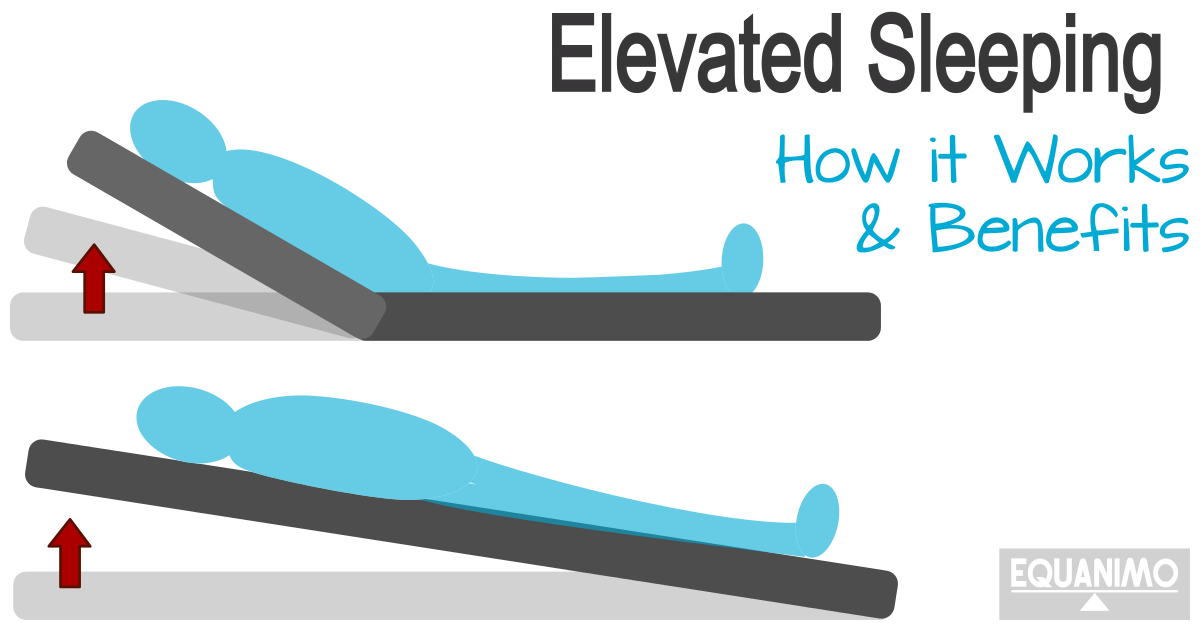
Types of Elevated Sleeping Solutions
Bed Leg Extension
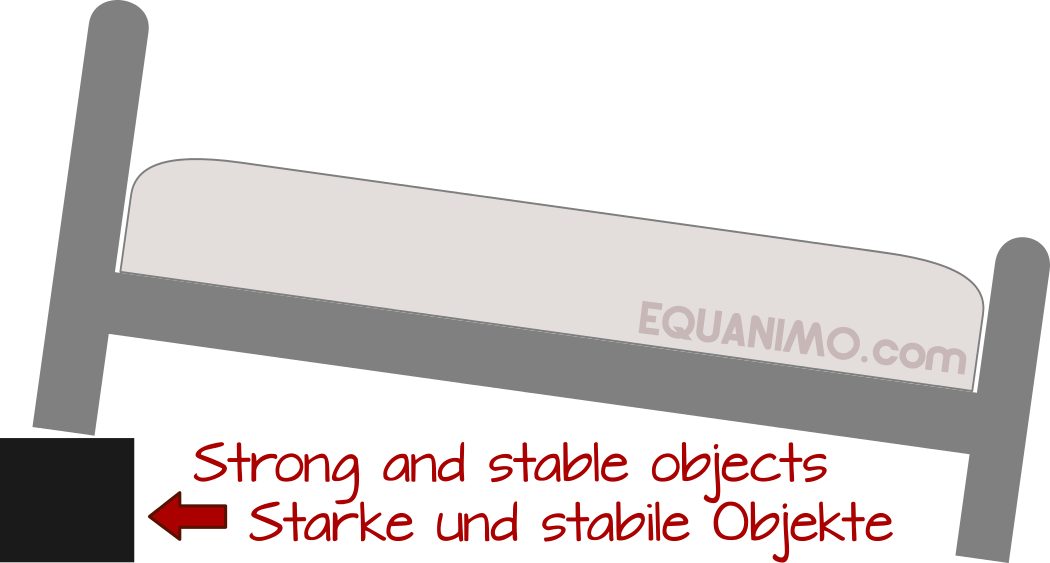
Strong and stable objects, such as wood blocks, bricks, and rubber bases.
Full-Mattress Tilt System

Various kinds: wood or steel wedge structure, PU foam wedge mattress, and inflatable wedge mattress
Upper-body Incline System on Mattress
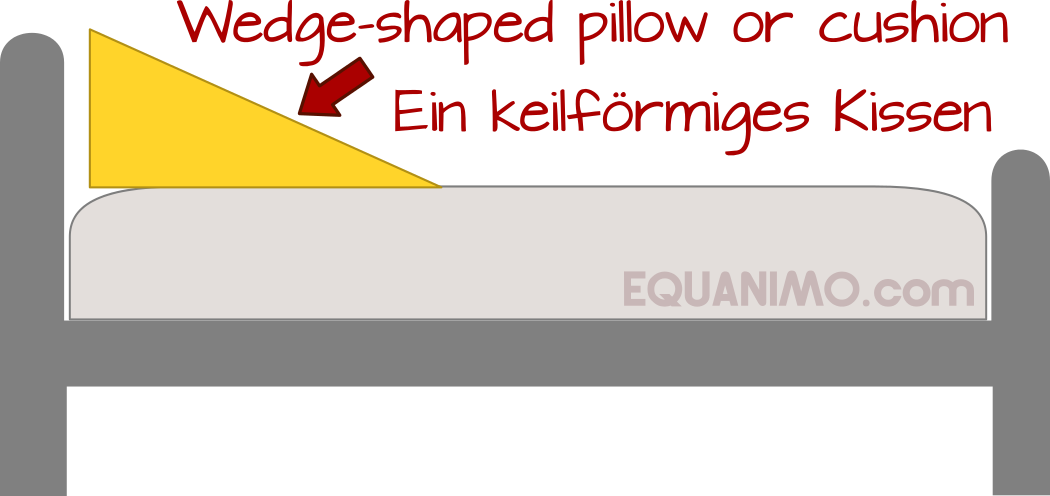
- A wedge-shaped pillow or cushion
- Different sizes and angles
- Different filling materials: cotton, polyester fiber, gel, air, water, and PU foam.
Upper-body Incline System under Mattress

A wedge-shaped cushion or structure: PU foam wedge, inflatable wedge, and wood or steel wedge structure
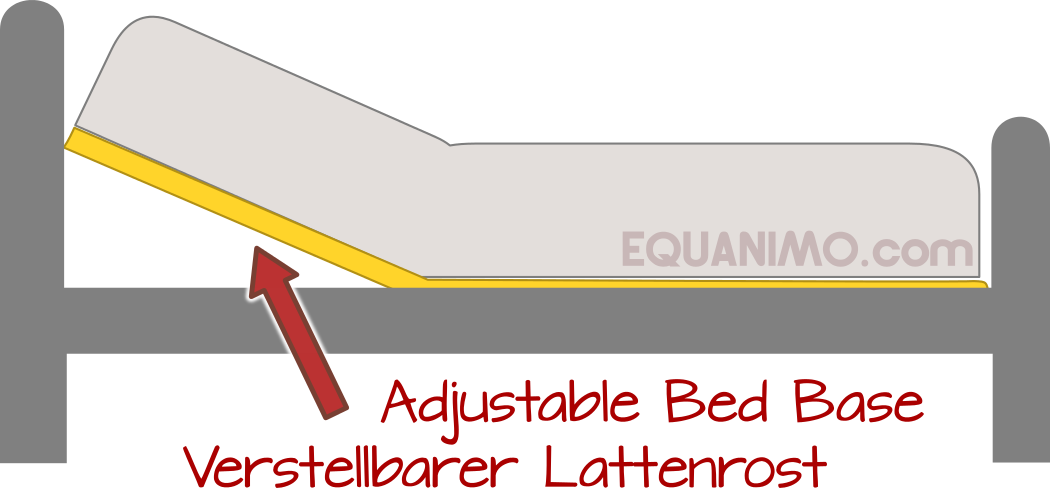
Adjustable bed base: manual and electric
Who sleep on an incline?
People who have immediate night-time symptoms that prevent them from sleeping in flat position
Acid reflux, indigestion, congested nose, night-time cough, snoring, and sleep apnea.
Those with compelling medical situations that require elevated sleeping to manage the symptoms, slow down progression, or avoid complications.
Pulmonary conditions (lung conditions), ear infection, glaucoma, and postoperative care
Many with less obvious, yet on-going symptoms that are often caused and/or worsened by flat lying
Unmanaged symptoms could possibly develop into more complicated health problems later.
- Ocular Hypertension (high eye pressure)
- Regular morning discomforts: puffy face, swelling eyes, headache, sinus congestion, and tenderness around head, face, and nose areas.
Those who have no known health conditions but have opted to sleep on an elevation to gain possible benefits of better circulation and drainage during sleep as self-care and preventive measures.
Elevated Sleeping: Benefits & How it Works
Gravity - The Hero: Individuals may experience benefits when sleep on an incline at different angles, yet the various merits are achieved with help from the very same key factor - gravity.
Benefits of Inclined Sleeping Commonly Accepted by Health Experts
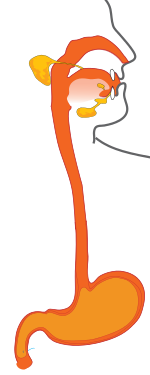
Gravity pulls down stomach content, providing immediate relief in the upper digestive tract
When an upper body is elevated, the gravity pulls the stomach content like food and acid to a lower position, helping manage symptoms that usually get worse when lying flat.

Elevated sleeping position keeps the upper airway open and enables easier breathing - an effective way to manage some problems related to upper respiratory tract
When one lies with the upper body propped up, the gravity force helps keep the upper airway open wider than when one is in flat position, and at the same time, prevents weak throat muscles from collapsing to block the airway. The incline position, therefore, promotes better air-flow and easier breathing, which is effective in relieving the following symptoms:
Inclined position promotes better circulation and drainage of the body’s fluids and prevents fluid retention, which causes discomforts, pains, swelling, infection, nerve damage, and possibly several other complicated health problems.
An inclined position allows gravity to assist with the circulation and drainage of the body’s fluids (blood, lymph, water, mucus, etc.), which would have otherwise pooled in particular parts of the body such as head, face, eyes, nose and sinuses, throat, and lungs when one lies flat during night hours.
Promising Potential Benefits of Elevated Sleeping
Based on the principle of gravity assisted drainage, many other benefits of sleeping on an incline have already been noted by a number of experts and experienced by several individuals who have embraced the practice into their everyday lifestyle.
It’s just a matter of time until enough researches and studies provide conclusive confirmation and explanation about these possibilities.
Some of the promising benefits are related to the following areas:
- Migraine
- Prostate nocturia (Urination at night)
- Alzheimer's
- Parkinson's disease
- Attention Deficit Hyperactivity Disorder
- Stroke in sleep
Drawbacks
Everything has pros and cons. Sleeping elevated also has its sets of drawbacks that you may want to consider.
1. It Costs extra money!
Yes, you may need to buy some kind of solution. However, not being able to sleep erodes all aspects of our life quality, physically and emotionally. Eventually, it will cost us more time and money on medication and health services.
2. It requires "change".
Changing habits is actually more difficult than making a one-time payment on the product. It requires willingness, time, patience, and a bit of faith.
Good News: It does not take that much time as you may have thought.
3. It may not be for everyone.
Sleeping on an incline up to 30 degrees is generally suitable for any adults. If you have ever slept in a TV recliner chair, a reclining beach chair, or in a hospital bed, then elevated sleeping is nothing new to you.

